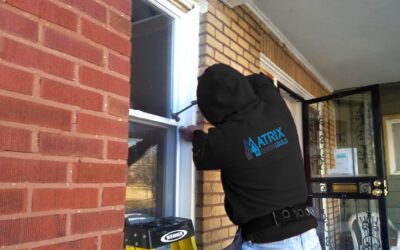If you’ve ever looked closely at the back of a computer, a kitchen appliance, or even a power tool, you may have noticed a series of tiny logos like UL, CE, or FCC. These aren’t just decorative marks, they represent the stamp of approval from Safety Standard Boards that help keep our daily lives safer.
Before we dive in, we recommend reading our comprehensive guide on the hierarchy of building codes in Philadelphia, which includes key references to certified testing laboratories.
Let’s break it down by first exploring how these marks work, based on a helpful.
What Are Safety Standard Boards?
Safety Standard Boards are organizations that develop, publish, and enforce safety standards for a wide variety of products, ranging from electronics and construction materials to consumer goods and industrial equipment. These boards either create standards or certify that a product complies with existing ones.
Commonly Known Boards Include:
- UL (Underwriters Laboratories) – Popular in the U.S. for electrical products and fire safety
- ETL (Intertek) – Tests to similar standards as UL but uses different internal processes
- CE (Conformité Européenne) – Required for products sold within the European Economic Area
- FCC (Federal Communications Commission) – Regulates electronic emissions in communication devices
- CSA (Canadian Standards Association) – Ensures products meet Canadian safety requirements
How the System Works
Regulatory marks are there to show that your product has been tested, sometimes for fire resistance, electrical shielding, or emissions, and approved by an independent body.
To put it simply:
- A product is designed by a manufacturer.
- It is submitted to a testing laboratory (like UL or Intertek).
- The lab tests it against standards developed by boards like NFPA, ANSI, or IEC.
- If it passes, the product gets a certification mark that tells consumers and regulators it’s safe to use.
Why Safety Standards Are Important
Safety standards are the invisible layer of trust that keeps consumers and businesses protected. They:
- Prevent electrical fires by mandating fuse requirements
- Reduce exposure to harmful chemicals
- Ensure mechanical integrity under stress or load
- Guide builders and engineers to use compliant materials
In the construction world, for example, using UL-listed wiring and GFCI receptacles can be the difference between passing inspection and facing a complete do-over.
Hierarchy of Safety Standard Boards
The process of ensuring product safety involves multiple organizations, each with specific roles:
1. OSHA (Occupational Safety and Health Administration)
As a U.S. federal agency under the Department of Labor, OSHA is responsible for ensuring safe and healthful working conditions. While OSHA does not test products directly, it mandates that certain products used in the workplace meet specific safety standards.
2. NRTL (Nationally Recognized Testing Laboratory)
The Nationally Recognized Testing Laboratory (NRTL) Program is administered by the OSHA to ensure that certain workplace equipment and products meet U.S. safety standards.
The program recognizes independent laboratories that are qualified to test and certify products for compliance with OSHA-approved safety standards. These standards help prevent workplace hazards related to electrical, mechanical, and chemical risks.
Standards Development Organizations (SDOs): Organizations like the International Electrotechnical Commission (IEC), American National Standards Institute (ANSI), and the National Fire Protection Association (NFPA) develop consensus-based safety standards. NRTLs use these standards as benchmarks during product testing.
3. Safety Standard Boards
Independent testing laboratories, like UL (Underwriters Laboratories), ETL (Intertek), and others, are private-sector organizations that perform product safety testing. These labs do not write safety standards themselves. Instead, they test products against standards developed by accredited SDOs such as NFPA, ANSI, or IEC.
These labs operate under the authority of the NRTL program. Each lab has a specific “scope of recognition” meaning they’re only allowed to test and certify certain types of products or standards.
Once a product passes testing, these labs allow manufacturers to apply a certification mark (e.g., UL, ETL) that signals compliance. These marks are widely recognized by inspectors, code officials, and consumers as proof that the product has been tested for safety.
Comprehensive List of OSHA-Accredited NRTLs
OSHA recognizes several NRTLs authorized to test and certify products. As of the latest update, the list includes:
- Bay Area Compliance Laboratories Corp.
- Bureau Veritas Consumer Products Services, Inc. (BVCPS)
- CSA Group Testing and Certification Inc.
- DEKRA Certification, Inc.
- Element Materials Technology Portland – Evergreen Inc.
- Eurofins Electrical and Electronic Testing NA, Inc.
- FM Approvals LLC
- International Association of Plumbing and Mechanical Officials EGS (IAPMO)
- Intertek Testing Services NA, Inc. (ITSNA)
- LabTest Certification Inc.
- Nemko North America, Inc.
- NSF International
- QAI Laboratories, LTD
- QPS Evaluation Services Inc.
- SGS North America, Inc.
- Solar PTL, LLC
- Southwest Research Institute (SWRI)
- TUV Rheinland of North America, Inc.
- TUV SUD America Inc.
- TUV SUD Product Services GmbH
- Underwriters Laboratories Inc. (UL)
For detailed information on each NRTL, including their specific scopes and contact details, refer to OSHA’s official Current List of NRTLs.
Spotlight on Prominent NRTLs: UL and ETL
Underwriters Laboratories (UL)
Founded: 1894 by William Henry Merrill Jr.
Origin: UL’s inception traces back to the 1893 World’s Columbian Exposition in Chicago. Merrill, an electrical engineer, was tasked with inspecting the fair’s electrical installations for safety. Recognizing the need for standardized safety testing, he established the Underwriters’ Electrical Bureau, which later became Underwriters Laboratories.
Today, UL is renowned for its comprehensive safety certifications across various industries.
Electrical Testing Laboratories (ETL)
Founded: 1896 by Thomas Edison
ETL was established as part of Edison’s efforts to ensure the safety and performance of electrical products. Originally focused on testing electrical and lighting products, ETL has expanded its scope over the years.
Now operated by Intertek, ETL continues to provide testing and certification services, ensuring products meet established safety standards.
How Do Safety Standards Interact With Local Codes?
Local code officials often require certain safety marks before approving materials for use in buildings. This is why certified electrical panels, plumbing fixtures, and even smoke detectors come with labels from recognized testing labs.
Sometimes, city inspectors will cite NEC 110.3(B), which says equipment must be “installed and used in accordance with any instructions included in the listing or labeling.” This reinforces the power of safety boards in the actual field.
Red Flags: What Happens Without Certification?
Using uncertified products can:
- Void insurance policies
- Lead to failed inspections
- Put users at risk of injury or fire
- Result in lawsuits or financial loss
Always check for labels like UL on materials, especially when sourcing from unfamiliar suppliers or online vendors.
Closing Thoughts
Safety standard boards may operate behind the scenes, but their impact is front and center in every aspect of modern living. From homes and hospitals to factories and office towers, they make sure products perform as promised, safely and reliably.
Whether you’re a contractor ordering materials, a manufacturer launching a product, or a homeowner replacing appliances, understanding these certifications helps you make informed, compliant, and safe choices.



![Top 20 Reasons for Failing a Plumbing Inspection in Philadelphia [2025 Guide]](https://matrixgc.com/wp-content/uploads/2025/05/Common-issues-causing-failing-a-plumbing-inspection-in-Philadelphia.png)

![Smoke Alarm Installation Requirements in Philadelphia [2025]](https://matrixgc.com/wp-content/uploads/2024/06/smoke-alarm-installation-400x250.png)


0 Comments